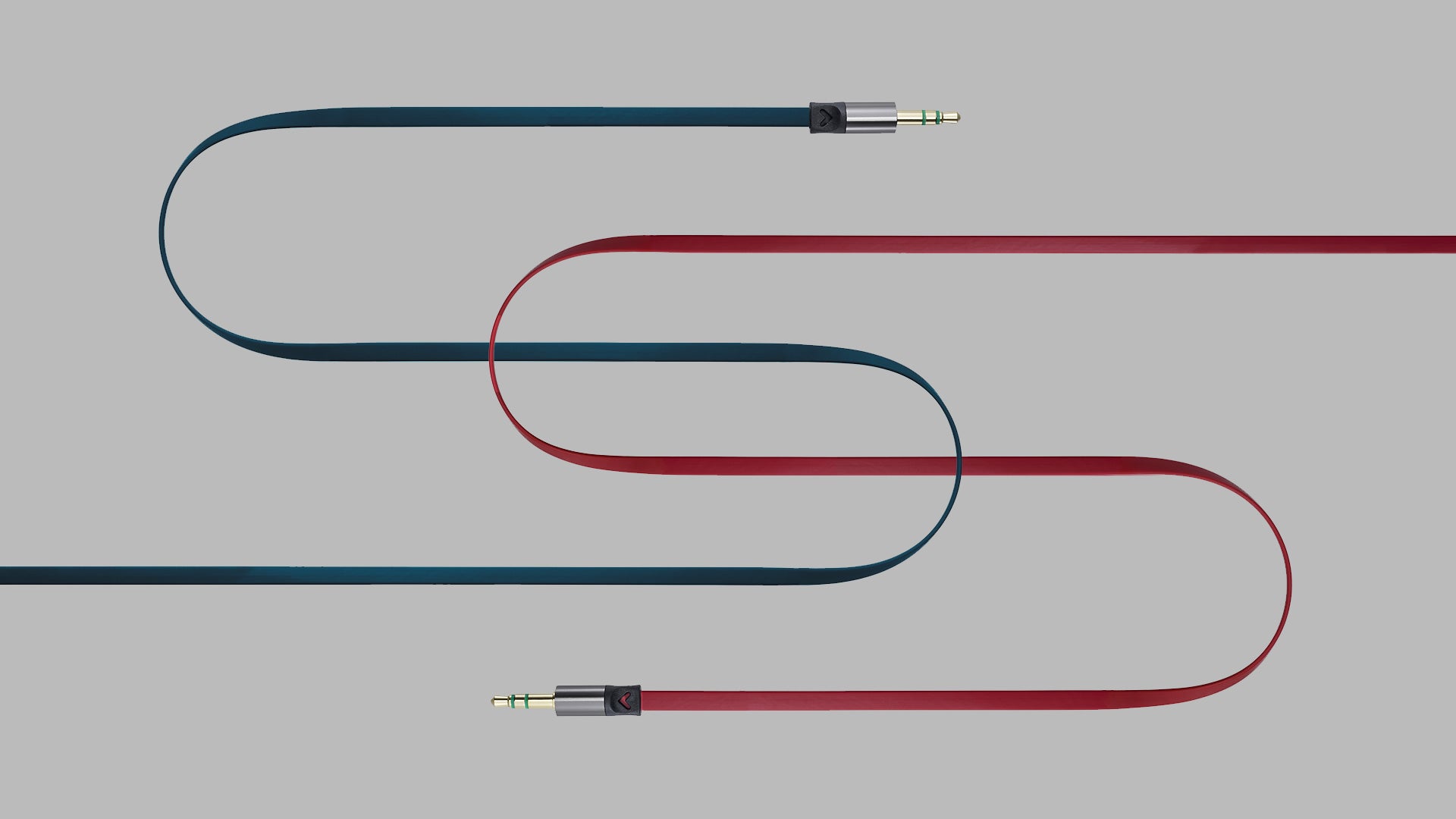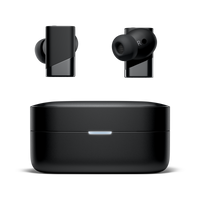
What’s the Difference Between Balanced and Unbalanced Audio Connections?
Let me guess: this isn’t the first article you’ve read in an attempt to understand the difference between balanced and unbalanced audio signals.
If you’re not fluent in the right kind of language, it’s easy to lose track of what’s going on when people start talking about balanced vs. unbalanced connections. Phase cancellation, ground wires, signal wires - don’t worry, you’ll know what all of this means 10 minutes from now. In this article, we’ll hopefully make this at times complicated topic a bit easier to understand.
Preface: Examples of Unbalanced and Balanced Connections
You can keep these in mind to orient yourself with some real world examples of what we’ll be talking about:
Unbalanced
- A guitar connected to an amplifier or audio interface.
- A pair of headphones connected to your laptop’s headphone output.
- Speakers connected to your laptop’s headphone output with an RCA cable.
Balanced
- A microphone connected to a speaker or audio interface.
- A DI (Direct Input) Box connected to an amplifier or interface.
- Some audiophile-oriented headphone cables connecting headphones to a specialized balanced output.
The Anatomy of An Unbalanced Audio Cable
Virtually any cable that you’ve ever used, be it audio or otherwise, has an external layer of insulation. It can be PVC, nylon, whatever. To get at the difference between balanced and unbalanced audio cables, we’ll be concerning ourselves with what lies beyond this outermost layer - that is, the wires inside of the cables. Let’s start by dissecting an unbalanced cable, as it will lay the groundwork for understanding balanced cables.
There are two parts that make an unbalanced cable what it is: a signal wire, and a ground wire. A sound source outputs an electrical audio signal, which travels through the signal wire, and makes its way to its destination: a guitar sends its audio signal through an unbalanced cable to an amplifier via the signal wire, for example.
Unbalanced Cable

A signal wire is made of a conductive metal, most frequently copper. While copper is an excellent medium for effectively carrying electrical audio signals, it also an effective medium for carrying anything electrical - including unwanted signals. Imagine the sound of an electric guitar buzzing through an amp when it’s not being played; that is the sound of a signal wire conveying electrical interferences. These interferences can arise from external electrical fields emanating from the plethora of our everyday electronic devices, or from internal electrical interferences originating from the insides of the guitar.
A signal wire needs protection from electrical signal interferences swirling in the world around it in order for it to accurately convey a signal from its source, rather than a noisy mess of static and hums. This brings us to the ground wire, which acts as the signal wire’s guardian.
The ground wire can also be called the sleeve, which is perhaps a more apt descriptor. If we compare the signal wire to a banana, the ground wire, or sleeve, is its peel. It encases the signal wire, and is usually composed of a woven mesh of extremely fine wires. It serves as a buffer between electrical interferences and the desired signal, ideally absorbing them before they can reach the signal wire.
While a ground wire goes a long way in sucking up and blocking interferences, it’s not 100% effective in doing so. To go back to the example of an electric guitar buzzing or humming through an amplifier, unbalanced connections still leave room for noise to leak into an audio signal. A different cable design needs to be deployed to bring interferences to a virtual silence, which brings us to balanced cables.
The Anatomy of a Balanced Audio Cable
While an unbalanced cable has one ground wire and one signal wire, a balanced audio cable has one ground wire and two signal wires.
Balanced Cable

As we just went over, an unbalanced cable works by reducing interference by using the ground wire for its protective shielding, while a balanced cable uses its ground wire for shielding and its additional signal wire to perform phase cancellation on electrical interferences. Let’s have a brief but necessary aside to explain phase cancellation, then we’ll come back to balanced cables.
Phase Cancellation
When you imagine the squiggly shape of a wave, what it’s actually performing is compression and rarefaction. Rather than getting into what exactly these terms literally mean, let’s simplify it and say that compression has a symbolic value of +1 and rarefaction -1.

If you take two identical waves and combine them, the result is a single wave that compresses at a value of +2 and rarifies at -2. In other words, two identical waves combine into a single wave that is twice as powerful. The two waves have been summed.

To cancel a wave, we have to bring its value to 0. How do we do this? Take the original single wave, and again, combine it with an identical wave - but this time, the second copy of the wave has been phase flipped - it’s in opposite phase from the original signal. This means that while the original wave is compressing, the phase flipped copy is rarifying, and vice verse.

The original wave can be represented as +1 / -1, while the phase flipped copy can be represented as -1 / +1. Add the two together, and the result is 0 / 0; no compression, no rarefaction, no signal. That’s phase cancellation in a nutshell.
Take a breather, and read that over one more time if you need to.
…Now that we understand phase cancellation and how it works, we’re ready to understand what occurs in a balanced cable. As previously mentioned, a balanced audio cable has a ground wire that shields its two signal wires, unlike the one signal wire found in unbalanced cables. These two signal wires are responsible for performing phase cancellation on electrical interferences.
Here’s how it goes down:
A source outputting an electrical audio signal sends two signals, one down each signal wire. These signals are identical, with one exception: they’re in perfectly opposite phase from one another, as one gets phase flipped when entering its respective signal wire.
Now let’s say some electrical interference enters the cable. The ground cable, or sleeve, does its best to offset it, but some interference still manages to make it into the signal wires. The electrical noise reaches both signal wires virtually simultaneously, and is thus traveling through them in two, in-phase copies.
Now comes the most important part of the process: once the signals reach their destination at the other end of the cable, the phase of one of the signals is flipped (again). With that, the unwanted noise contained in that signal is also flipped. The result? Two identical, now in phase, electrical audio signals that sum together, and two identical noise signals that are now in opposite phase and cancel out.
I know that might have been a lot, take some time to look at everything that’s occurring in a balanced signal:

- Identical signals enter out of phase.
- Noise enters both signal wires in phase.
- Phase is flipped on one wire at the end of the connection (blue wire in this example).
- Signals pass through in phase and sum into a single signal. Noise signals are out of phase and cancel.
Practical Uses for Unbalanced vs. Balanced Audio Connections
So if balanced signals are better protected from interference than unbalanced signals, why do we ever used unbalanced cables? For one, balanced audio connections result in a higher cost of production due to the extra parts they contain. But the second reason is that unbalanced connections are perfectly sufficient in most situations. The physical length of a connection is the most important determining factor when it comes to deciding between going balanced or unbalanced. Longer connections, which we can generalize as greater than 25 feet, provide a larger surface area for interferences to enter the cable and penetrate past the ground wire. When it comes to connecting your headphones or speakers to your laptop’s output, you’re most likely using a cable that is well under 25 feet, thus an unbalanced connection will serve you just fine. Balanced connections are more important in live sound scenarios, as it’s not uncommon to see 50 or 100 foot cables put to use. Balanced connections may also find preference in recording studios, due to the lower noise floor they provide.
Anyway, hope that cleared the air - or opened up a new can of worms.





